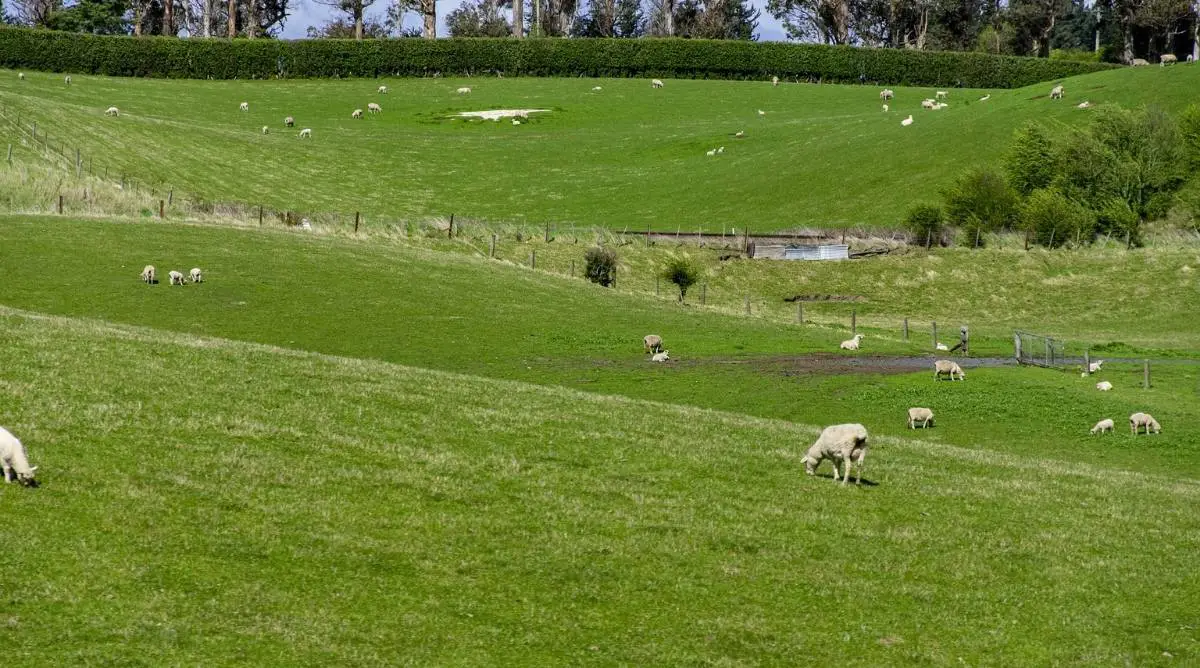Royal White sheep are the result of crossbreeding between St Croix ewes and White Dorper rams in Texas. The breed is known for its head-to-feet snowy white appearance. Royal White sheep also disease-resistant, hardy, and an easy breed to care for, with excellent meat and leather production.
Royal White Sheep Breed Origin
The Royal White sheep is a hybrid of Dorper and St. Croix sheep. It was developed by William Hoag, a farmer at the Dorpcroix Sheep Farm in Hermleigh, Texas.
The goal with the Royal White breed was to create a low-maintenance breed with a high survivability rate, helping farmers to earn profit with less labor and operating costs.
Between 1995 and 1996, William Hoag crossbred St. Croix ewes and White Dorper rams. The idea behind using this breeding stock was to combine the high meat production rate of the Dorper sheep with the low-maintenance St. Croix sheep.
Royal White Sheep Breed Characteristics
| Characteristics | Description |
| Origin | Texas, United States |
| Appearance | Snowy white appearance. |
| Wool | The Royal White is a hair breed. |
| Weight | Up to 250 pounds (Rams). 150 pounds or more (Ewes). |
| Meat | Excellent meat. |
| Environment | As a short-hair breed, the Royal White does well in heat. The fat in their tails helps provide warmth in colder climates. |
| Common uses | Meat production, leather production. |
| Fertility | High survival rates. Lambing percentage of around 200%. |
As a hair sheep, the Royal White sheep has a snowy white coat that naturally sheds off during springtime. Both rams and ewes are polled, which makes it easier to handle this breed of sheep. With their short hair, they’re also more resistent to parasistes due to the absence of fecal buildup.
At maturity, a Royal White ram can weigh up to 250 pounds. Royal White ewes weight 150 pounds or more. Royal White sheep can withstand harsh climates like their St. Croix sheep and White Dorper breeding stock.
Royal White ewes have an excellent mothering ability, which helps them get to a lambing percentage of about 200%.
The Royal White Sheep Association recommends not docking the sheep’s tails. The fat in their tails provide energy for lactation and warmth in cold climates.
Royal White Breed Facts
- As primarily a meat sheep breed, a Royal White is grass-fed, although its diet can be supplemented with hay and occasional grains on a rotational grazing program.
- In 2007, there were around 1,500 Royal White sheep registered in the US livestock industry.
- The leather obtained from the Royal White is high quality. It is ideal for upholstery, garments, and other leather goods.
- The Royal White is one of the few recent breeds developed in the United States.
- The majority of ewes and rams don’t have horns.
- Unlike many sheep breeds, Royal Whites aren’t flighty. Their instincts and temperament make it easy for their breeders to handle the flock—even without a herding dog!
- As a hair sheep breed, the Royal White is able to withstand heat stress that is often associated with wooled breeds. This helps increase survival rates.

